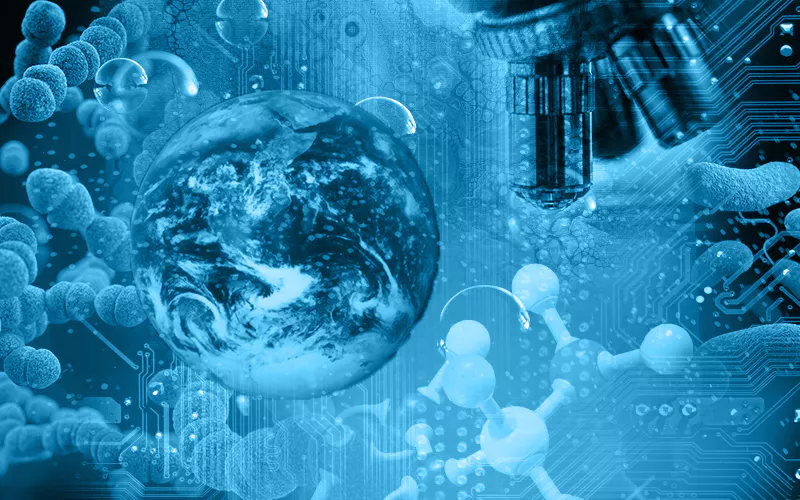In 2025, the global scientific community finds itself at an inflection point. With the United Nations declaring 2025 the International Year of Quantum Science and Technology, quantum research is poised to take center stage. Wikipedia At the same time, advances in artificial intelligence (AI), biotechnology, and interdisciplinary tools are converging to accelerate discovery. Here’s a deep dive into how quantum science, AI, and allied fields are reshaping research—and what to watch as we progress through the year.
1. The Quantum Leap: Why 2025 Is Unique
Quantum science is no longer confined to theoretical physics labs. The global spotlight is on practical applications: quantum sensing, quantum communication, quantum computing, and materials based on quantum effects. The United Nations’ endorsement underscores the urgency to raise awareness and investment in quantum technologies. Wikipedia
One exciting development comes from particle physics—researchers are revisiting the top quark as a probe for quantum-mechanical effects at the energy frontier. A recent preprint, “The top quark in 2025 — International Year of Quantum Science and Technology”, explores how top quarks could help test post-quantum correlations. arXiv
Quantum sensing is also gaining momentum in real-world domains like medical imaging and geophysics. As sensors become more sensitive to quantum-level fluctuations, we may unlock new detection capabilities for disease, materials defects, and even gravitational anomalies.
2. AI + Quantum: A Symbiotic Future
AI is not just an accelerant—it’s becoming integral to quantum science. Complex quantum systems generate massive datasets, and AI helps decode, predict, and optimize within these spaces. Meanwhile, quantum computing promises to boost AI algorithms by enabling computational tasks beyond classical limits.
This synergy mirrors trends already underway in biotechnology, where AI is combined with CRISPR-based gene editing to refine accuracy, predict off-target effects, and accelerate discovery. WIRED The blueprint seems clear: the future of science lies at the intersection of AI and domain-specific tools like quantum platforms.
3. Biotechnology & Genomics: The Data Deluge
While quantum grabs headlines, the biotech realm continues evolving at breakneck speed. The fusion of AI, genomics, and synthetic biology is reshaping how we understand life.
- Genetic Engineering & CRISPR: New delivery systems, such as lipid nanoparticles, are making gene editing safer. The integration with AI allows more precise targeting and reduced unintended genomic effects. go.zageno.com+1
- Synthetic Biology (SynBio): Engineering organisms for useful tasks—biofuels, pharmaceuticals, materials—is growing in scale. AI helps simulate and optimize synthetic pathways before lab experiments begin. go.zageno.com
- Microbiome & Multi-omics: Combined datasets from transcriptomics, proteomics, metabolomics, and microbiome studies produce massive complexity. AI-based integrative models are essential to decode interactions across scales. go.zageno.com
The result? Faster discovery cycles, better biomarker predictions, and more agile therapeutic development.
4. Materials, Energy & Sustainability
Innovation in materials science and sustainable energy remains foundational for the next generation of technology. In 2025, the spotlight is on:
- Quantum materials: Topological insulators, superconductors, and 2D materials are being studied through quantum-informed models. Their unique electronic and magnetic properties could revolutionize electronics, spintronics, and energy systems.
- New battery & energy storage tech: To tackle climate challenges, researchers are developing novel materials (e.g. solid-state electrolytes, advanced anodes) to improve energy density, safety, and longevity.
- Carbon capture & green chemistry: Biotech plus AI is used to engineer catalysts and microbial systems that convert CO₂ into value-added products or sequester it more efficiently.
These domains benefit from cross-disciplinary modeling, where AI, quantum, and systems-level thinking intersect.
5. Challenges, Risks & Ethical Considerations
Breakthroughs don’t come without hurdles. Here are key challenges that scientists and policymakers must address:
- Interpretability & explainability: AI models, especially in science, must be transparent. “Black box” solutions are ill-suited when researchers demand mechanistic insight.
- Scalability & reproducibility: Experimental validation remains the gold standard. Computational predictions must prove robust across labs and conditions.
- Ethical & governance frameworks: As manipulations of life (e.g. synthetic biology, gene editing) grow more powerful, oversight becomes critical.
- Resource & infrastructure gaps: Not every institution can deploy quantum hardware or large-scale AI platforms. Equitable access is key to avoid a “digital divide” in research.
- Trust & communication: In an era of misinformation, scientific claims must be communicated clearly and responsibly to the public.
6. What to Watch Through 2025
| Area | Key Indicators / Milestones |
|---|---|
| Quantum | New quantum computing benchmarks, quantum internet testbeds, industrial adoption |
| AI in Science | Algorithms that suggest new experiments, self-driving labs, autonomous hypothesis generation |
| Gene Therapy | Regulatory approvals, safety of delivery systems, expansion to complex polygenic diseases |
| Sustainable Tech | Breakthroughs in carbon capture, low-cost energy storage materials |
| Policy & Ethics | New international agreements on AI/biotech oversight, public engagement in science policy |
7. How You Can Keep Up
For readers, students, or curious minds wanting to stay ahead, here’s how:
- Follow leading science news outlets like Nature, ScienceDaily, SciTech Daily, and Science News. Nature+2ScienceDaily+2
- Subscribe to domain-specific newsletters (quantum, biotech, AI research)
- Engage in open science platforms or citizen science initiatives
- Read preprint servers and stay abreast of new arXiv submissions
- Explore MOOCs or short courses in quantum computing, AI for biology, or sustainable materials
In sum, 2025 is the year in which science crosses traditional boundaries. Quantum science, AI, and biotechnology are converging faster than ever before. The breakthroughs we’ll see may redefine how we compute, heal, and interact with our environment. But as always, progress must be tempered with responsibility, oversight, and inclusivity. Watch this space: the next frontier is unfolding.
